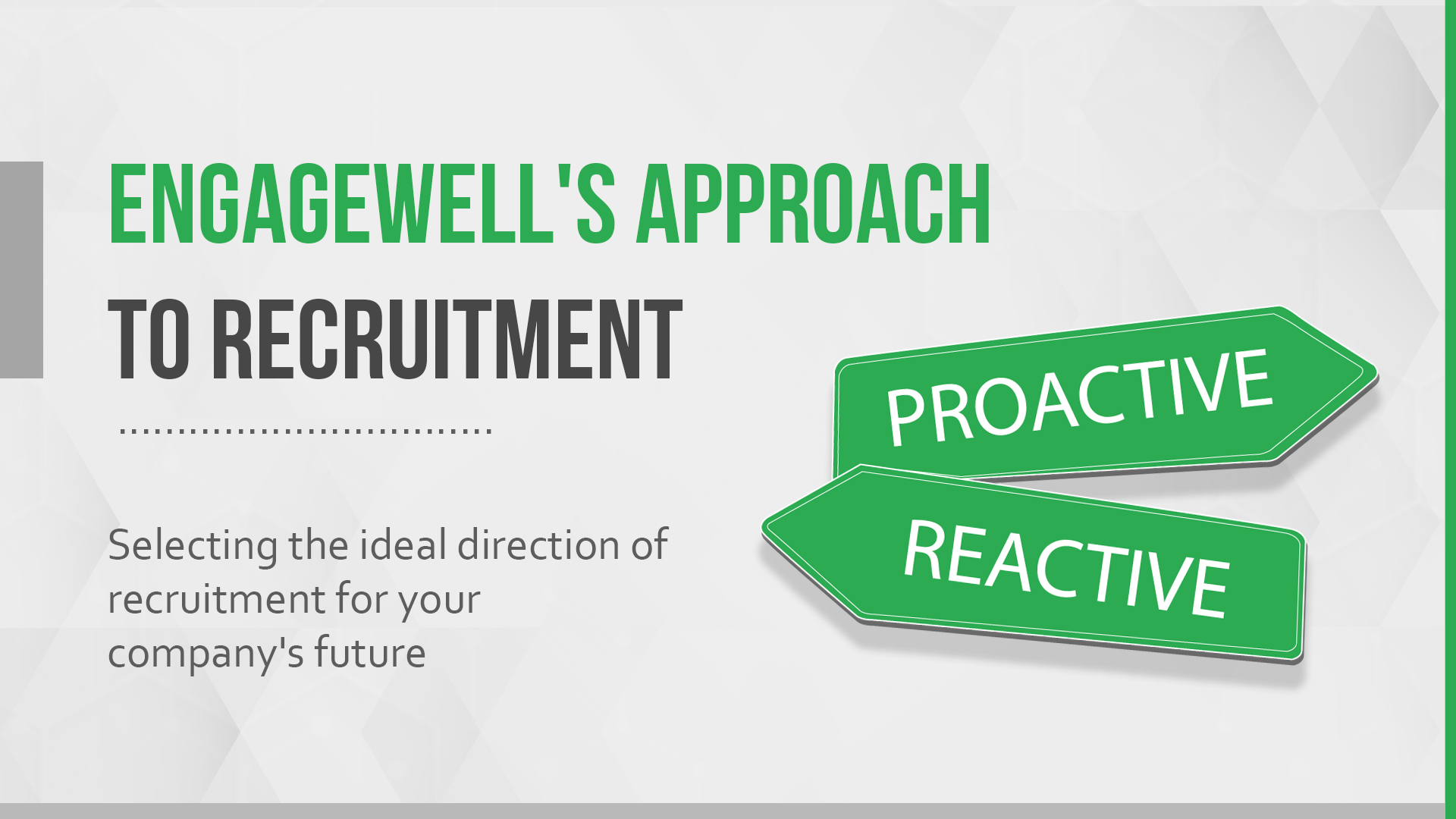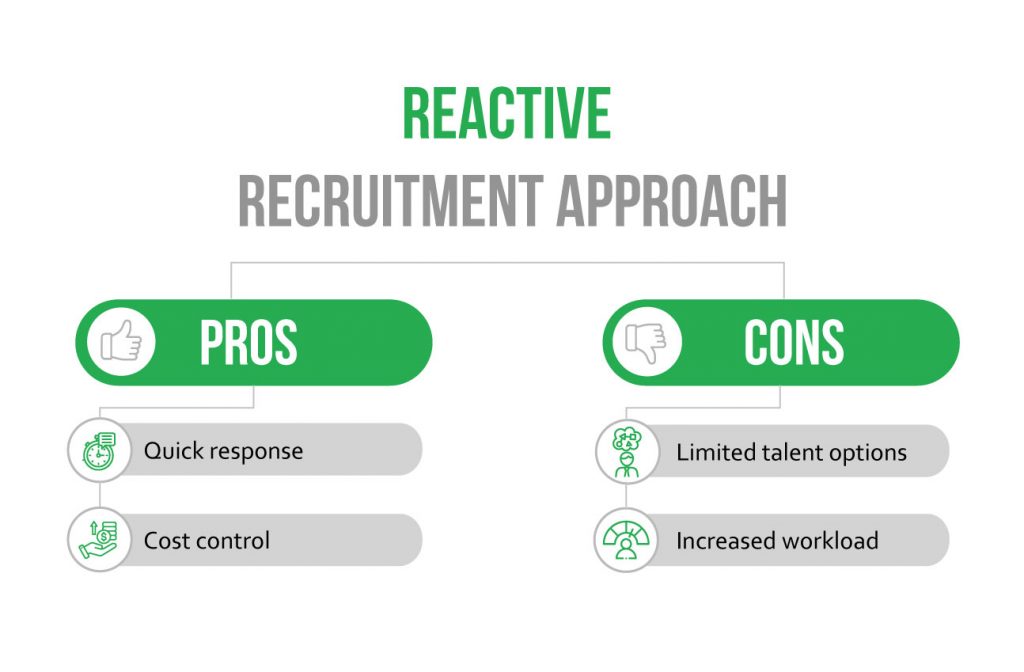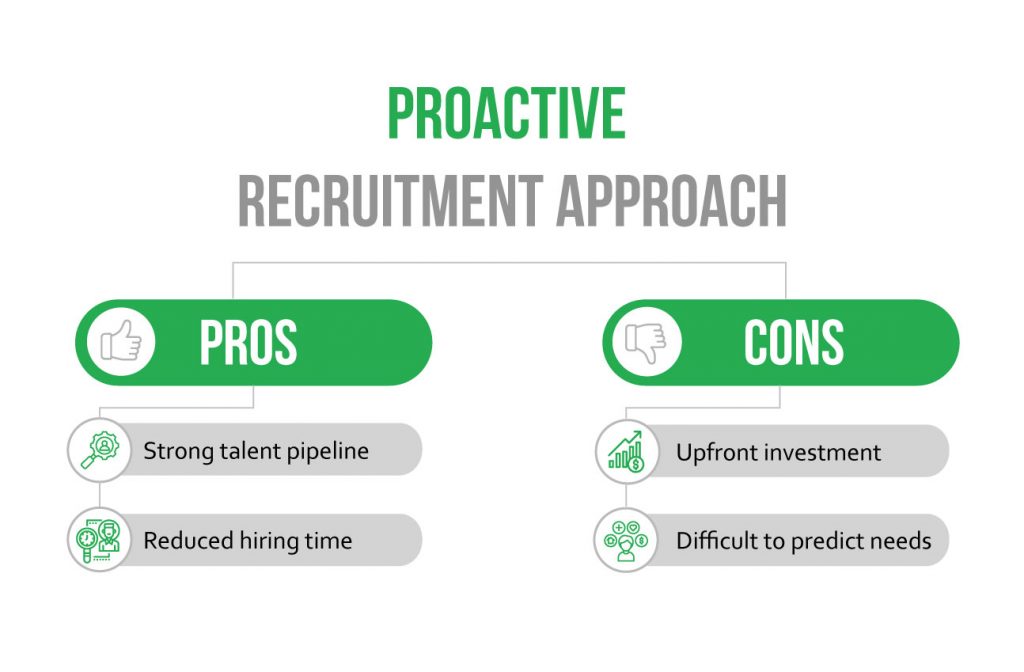
Anjali Yadav
What is Reactive and Proactive approach of hiring?

The composition of your company's workforce is heavily influenced by your current recruitment strategy. Whether you bring in high-quality candidates or make quick hires, it hinges on the careful planning of your recruitment workflow.
Proactive and reactive recruitment are two unique strategies for meeting talent acquisition needs. Prior to the emergence of a specific recruiting need, viable applicants are actively sought out, engaged with, and attracted through proactive recruitment. The practice of hiring new people to fill newly vacant roles is known as reactive recruitment.
If you're aiming to secure the finest talent for your company, it's crucial to determine which approach aligns better with your organizational needs: Proactive or Reactive recruitment. Let's explore this in our blog.
Reactive approach meaning?
The Reactive Recruitment Approach is a hiring strategy in which an organization responds to specific job openings or talent needs as they arise. Instead of actively seeking out potential candidates in advance, this approach relies on addressing hiring requirements only when positions become vacant or when an immediate need for additional staff emerges. Typically, the recruitment process in a reactive approach starts after a job vacancy is identified, and it involves advertising the position, receiving applications, conducting interviews, and ultimately making a hire.
This approach can be effective for quickly filling urgent vacancies or positions with specialized skill requirements. However, it may not always lead to the most strategic or long-term talent acquisition, as it doesn’t involve ongoing talent pipeline development or proactively building relationships with potential candidates in advance.

Benefits of Reactive approach
Quick Response:
Reactive hiring excels in providing a swift response to immediate staffing needs. When an organization faces unexpected departures or a sudden increase in workload, it can quickly initiate the recruitment process to fill essential roles. This agility helps prevent operational disruptions and ensures that critical tasks are adequately addressed without prolonged delays.
Cost Control:
This approach offers a degree of cost control by allocating resources only when an immediate need arises. Organizations do not have to maintain continuous recruitment efforts, saving on advertising, sourcing, and other recruitment-related expenses during periods of stability.
Disadvantages of Reactive approach:
Limited Talent Options:
Reactive hiring primarily relies on candidates who are actively seeking employment or happen to be available at the time of the job opening. This can limit the pool of potential talent and may result in overlooking passive candidates who are not actively job hunting but could be strong fits for the organization.
Increased Workload:
HR teams and hiring managers often experience an increased workload when dealing with sudden recruitment needs. The urgency to fill positions swiftly can lead to a heavier administrative burden, potentially affecting the efficiency of the hiring process and the quality of candidate assessments.
Proactive Approach meaning?
The Proactive Recruitment Approach is a hiring technique in which a company adopts a proactive stance by actively seeking out and engaging potential candidates prior to the availability of certain job openings. Even if there isn’t a job opening right away, this strategy calls for developing relationships with possible applicants in order to create a talent pool for future requirements.
In proactive recruitment, businesses locate and interact with prospects using a variety of strategies, including networking events, talent databases, social media, and professional platforms. They build a pool of pre-qualified candidates who are enthusiastic about the business and its potential as a result.
The proactive strategy enables firms to see talent acquisition from a more strategic and long-term viewpoint. They are able to hire for crucial positions faster and with higher quality hires overall because to its assistance in securing top personnel in advance. This strategy is particularly helpful for positions that call for specific talents or are challenging to swiftly fill using reactive methods.

Benefits of Proactive Approach:
Strong Talent Pipeline:
Proactive hiring is known for building a robust talent pipeline. By identifying and engaging with potential candidates in advance, organizations create a reservoir of talent who align with the company's values and needs. When positions open up, there's a readily available pool of qualified candidates, reducing the time-to-hire and ensuring a continuous supply of suitable talent.
Reduced Hiring Time:
Since a talent pool is pre-established, the hiring process becomes more efficient and streamlined. Recruiters can skip the initial stages of advertising and sourcing and proceed directly to assessing and interviewing candidates. This reduces the overall time required to fill job openings.
Disadvantages of Proactive approach:
Upfront Investment:
Proactive hiring demands an initial investment of resources and effort. Building and maintaining relationships with potential candidates, participating in industry events, and utilizing technology for talent tracking require dedicated resources. This upfront investment may not yield immediate returns but is essential for long-term talent acquisition success.
Difficult to Predict Needs:
Predicting future staffing needs accurately can be challenging. Organizations may overestimate or underestimate their future requirements, resulting in an imbalanced talent pipeline. A shifting business landscape or changes in organizational strategy can further complicate the prediction of staffing needs, making it challenging to maintain the right balance in the talent pool.
Which recruitment approach does EngazeWell use?
EngazeWell primarily aligns with a proactive approach to hiring. It boasts a resume database that actively collects and organizes candidate resumes, promoting the establishment of a long-term talent pool.
EngazeWell primarily aligns with a proactive approach to hiring. Its features and capabilities indicate a proactive stance in talent acquisition:
- Resume Database: EngazeWell actively collects and organizes candidate resumes, emphasizing long-term talent engagement and the creation of a talent pool.
- Open Job Listings: The system allows for open job listings, inviting candidates to apply for positions even when there are no immediate openings, demonstrating a proactive approach to talent acquisition.
- Profile Matching: EngazeWell supports profile matching, aiding in the identification of suitable candidates for future roles, a characteristic of proactive hiring’s talent nurturing focus.
- Resume Screening: The automation of resume screening streamlines candidate evaluation, indicative of a proactive stance, reducing time-to-hire for future positions.
It’s features and capabilities are tailored to support organizations in planning for future staffing needs and cultivating a steady talent pipeline, while still allowing flexibility to adapt to specific recruitment strategies and immediate staffing demands.
Don’t miss out on the future of recruitment. Take the first step now and join EngazeWell to embark on a transformative hiring journey.
About the author

